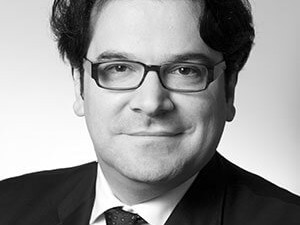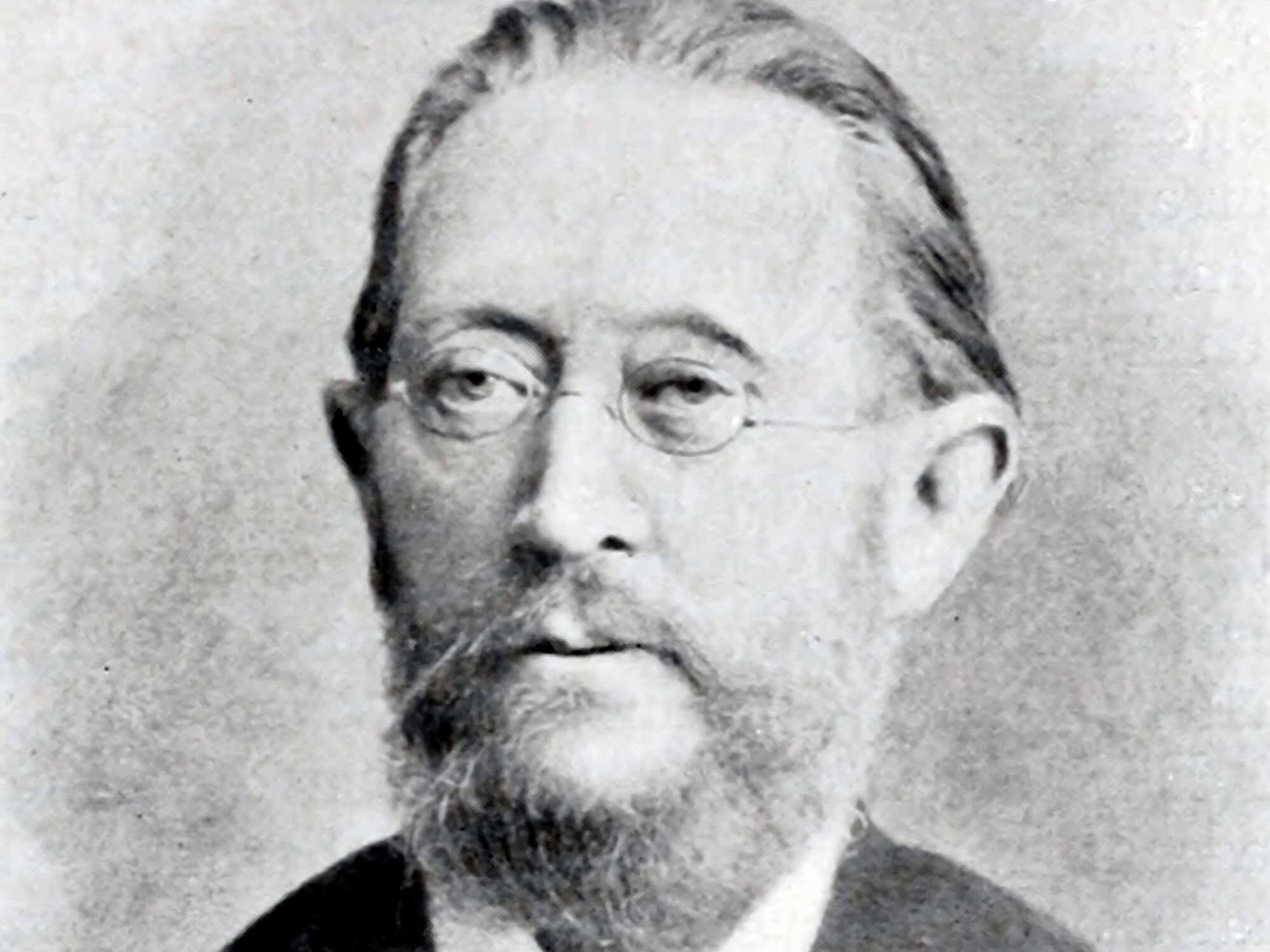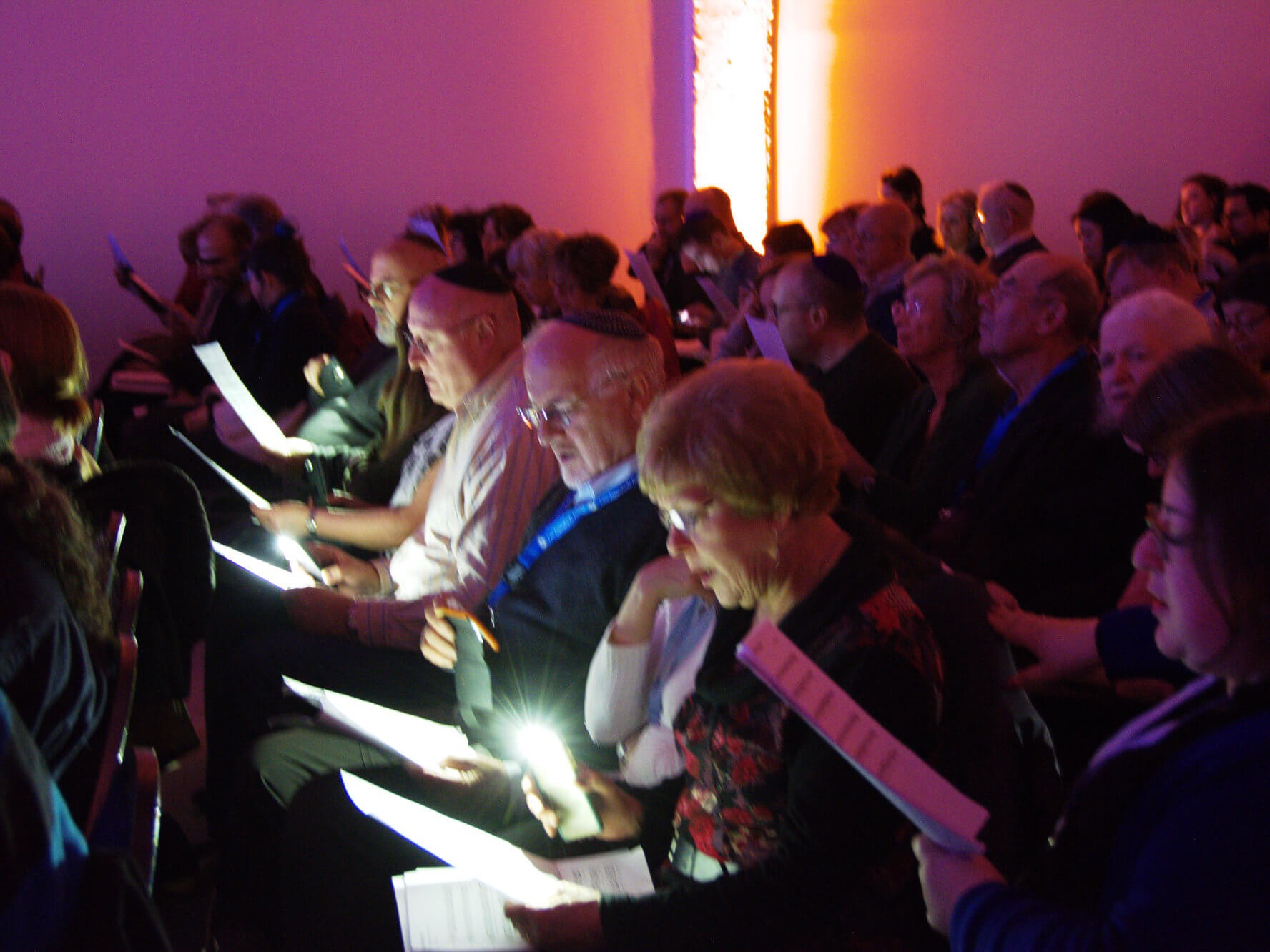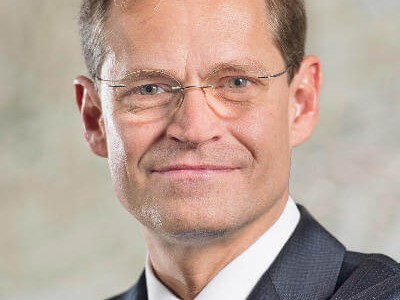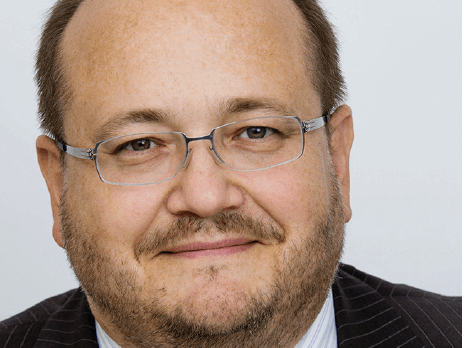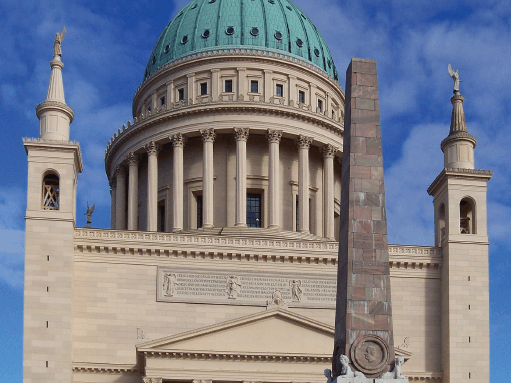Two months after the liberation of Berlin two hundred people gathered for a memorial service in the British sector of Berlin, in the cleaned-up ruins of the Pestalozzistrasse Synagogue. In a letter, an American GI describes this service to his wife, saying it was “impressive in the extreme,” “everyone wept,” and “one of the men switched back on the Eternal Light.” The ceremony began with Lewandowski’s setting of the Shehechiyanu, a blessing to celebrate special occasions and to give thanks for unusual experiences, then chanted by 73-year old Chief Cantor Leo Gollanin (1872 – 1948), who had survived the war in Berlin. There was harmonium accompaniment throughout the service, and the music demonstrated, according to the GI, an “unmistakable attempt to return to the olden days” – the “olden days” referring to pre-Weimar aesthetics with its reliance on Lewandowski’s works.
Widely acknowledged as one of the most influential nineteenthcentury composers of synagogue music, during his lifetime Louis Lewandowski exerted a strong influence on the Western Ashkenazi style through his activities as a teacher at the Jewish Free School and the Jewish Teachers’ Seminary in Berlin. After his passing in 1894, his works continued to be widely received in the Jewish communities of German-speaking Europe and beyond. Deeply rooted in the ideas of the Haskalah associated with Moses Mendelssohn and his successors, Lewandowski uniquely balanced aesthetic and religious aspects, preserving traditional liturgical music in altered form. At a time of musical acculturation and increasing disintegration of synagogue song, he most convincingly linked “heritage” with current modes of expression prevalent in the world of music. This dialectical access to the Jewish musical heritage also ensured his continuing influence despite a weakened reception.
in the early 20th century. In the meantime, Lewandowski’s music had made its way to the New World, where both Ashkenazic and a few Sephardic synagogues adopted selected pieces; he was heard as far away as in the Shanghai ghetto, and in Japan and Australia. Sung in Hebrew or in German translation, with mixed or all-male choir or without choir, with or without organ accompaniment, Lewandowski’s synagogue music became truly pan-denominational. At the same time the space of Lewandowski’s music changed, broadening to the emerging synagogue concerts while being succeeded by new works of emerging composers; and it was to shift again after 1945, with a renewed presence in the postwar soundscape of Berlin, Divided Germany, and beyond. Pestalozzistrasse continued the Lewandowski service of the Neue Synagoge Oranienburger Strasse with mixed choir and organ. Communities without cantor or choir—of which there were many in postwar Europe—and all interested listeners regardless of their religion could enjoy Lewandowski through broadcasts, which cantor Adolf Schwersenz had initiated in 1946 for the radio station RIAS Berlin and which later expanded to other stations. Likewise, the custom of synagogue concerts resumed in the postwar era as early as 1946 at Pestalozzistrasse synagogue, and Lewandowski was on the program.
With its programming in concerts, Lewandowski’s music came to play a significant role in establishing an interfaith dialogue and a mutual understanding between highly diverse audiences in German-speaking Europe – and beyond. The continuing presence of Lewandowski in different contexts and in multivalent spaces attests to his unbroken and expanding legacy. “Will Lewandowski’s works last?” wondered Magnus Davidsohn, former chief cantor of Berlin’s Fasanenstrasse Synagogue, in 1952. Not foreseeing the 2011 foundation of the Louis Lewandowski Festival, which annually celebrates the composer’s legacy in service and concert, he provided an answer that is still valid more than half a century later: “To this very day they have not diminished in importance.”
Prof. Dr. Tina Frühauf
Dr. Gideon Joffe | Vorsitzender der Jüdischen Gemeinde zu Berlin
It is largely thanks to the great reformer of synagogal music that the traditional Jewish prayer service took on a new form.
Louis´Lab 2017
At last year’s festival, a concert of a different kind took place for the first time with the support of the mayor of Treptow-Köpenick, Oliver Igel.
Michael Müller | Regierender Bürgermeister von Berlin
I would like to welcome all musicians and guests to the 7th Louis Lewandowski Festival.
Nils Busch-Petersen | Festival director
Liebe singende und lauschende Teilnehmende am 7. Louis Lewandowski Festival, seienSie herzlich willkommen!
St. Nikolai, Potsdam
Erstmals gastiert das Louis Lewandowski ineinem der bedeutendsten BauwerkePotsdams: der evangelischen Kirche St. Nikolai. Die gewaltige Kuppel, unter anderem von der St.-Pauls-Kathedrale in London inspiriert, bildet den charakteristischen Mittelpunkt der Stadt.
